Hammerschmidt saxes with eyebrow key guards are perhaps not as uncommon as we thought
My website is a virtual treasure trove of images when it comes to Hammerschmidt saxophones. I have been gathering info and amassing information about this brand for nearly a decade. The Klingsor saxes by Hammerschmidt—and their stencils—are known for a number of things, including their Lucite key guards that were available on the some models.
However, these plastic key guards were not the only unusual ones that Hammerschmidt made. In December 2008, I happened across a Josef Hammerschmidt & Sons alto that had a type of eyebrow key guards. Over the years I have documented a variety of eyebrow key guards on horns carrying the Hammerschmidt name.
What was strange this week is that not one, but two, somewhat different Hammerschmidt saxes with eyebrow key guards popped up on two different eBay sites. Fortunately, both sellers provided lots of greats images with a lot of details of their horns. Thus the auctions provide a bit of insight into different Hammerschmidt models.
The first Hammerschmidt is a Klingsor on eBay.com. The horn is a tenor that is currently making its second go-round on the auction site.
Source: custom_92ranger on ebay.com
This is how the seller describes this horn:
Beautiful 1952 Klingsor Saxophone. I absolutely know nothing about this piece. I couldn’t tell you if it plays well or re-padded. Only spot with numbers, which I am assuming are the serial numbers since it is the only spot with numbers “0100.” Body is very straight with no major dents or solder work. I have never cleaned the saxophone or worries I would damage the coating some how. Has a beautiful engraving. Neck is straight with no creases. Has a buescher true tone mouth piece. Although no serial number on the neck it does look very original and matches the instrument. What you see is what you get with the saxophone. Comes with hard case, although, the case is probably original but in horrible shape. Email me with questions and I will try to answer questions. Please judge by pictures. I can not guarantee anything on this piece. Thank you!
Here are the rest of the pics of this rather interesting horn…
Besides the eyebrow key guards, there are some other things that are remarkably different about this Klingsor, compared to others that Hammerschmidt built. These include:
- Tone holes
Like most German saxophones of the era, Klingsor saxes had rolled tone holes. This Klingsor does not possess those. Furthermore, it appears that its tone holes are in fact bevelled. That is most noticeable in picture 9 of the gallery above.
- Keys
Notice the keys are smooth. The key arms are not attached to the tops of the keys like we usually see, but rather to the sides. This is not only a departure from other Klingsor models, but I cannot remember seeing another make of saxophone with this type of key arm attachment.
If this tenor is of interest to you, then you have until March 13 to get your bids in. This is a no reserve auction, with bids starting at $550.00. At the time of writing no one has bid on this interesting bit of Hammerschmidt history yet.
Hammerschmidt saxes with eyebrow key guards, zweites Teil: the prettiest sax ever?
Source: klarinette10_0 on eBay.de
The second Hammerschmidt I saw this week was an alto, but it did not carry the model name Klingsor. Rather, it is engraved with the name Klingson. Klingson is the name we typically associate with saxophone built for Hammerschmidt by other companies.
What is even more confusing, is that this alto doesn’t have any of typical Hammerschmidt engraving on the bell (1,2), but rather the name Christian Reisser, and the city Ulm/Donau.
Regardless of the model name confusion, this alto is, IMHO anyway, one of the prettiest saxophones ever made.
This is how the seller the described the alto that appeared on the German eBay site:
Zur Auktion steht ein sehr schönes und detailverliebt gearbeitetes Alt-Saxophon der Fa. Hammerschmidt, Modell Klingson. Hierbei handel es sich um ein Vorkriegsmodell, das vermutlich zwischen 1935 und 1940 für das Musikfachgeschäft Christian Reisser, Ulm gebaut wurde. Es trägt die Serien-Nr. 055. Nach der Vertreibung 1945 kam Hammerschmidt nach Burgau und hat dort ab 1950 bis in die frühen 1980er-Jahre Saxophone mit der Bezeichnung „Klingsor“ gefertigt.
Nachstehend die wichtigsten Besonderheiten:
-
Gebördelte Tonlöcher
-
Nicht nur die Drücker auf den Klappendeckeln sondern auch die Palmkeys sowie Gis, Cis, H, Bb-Cluster und C/Dis-Drücker sind mit echtem Perlmut belegt.
-
Sehr schöne und dekorativ gestaltete Klappenschützer (Art Deco).
-
Die Klappendeckel haben keinen durchlaufenden Steg sondern sind seitlich angebracht.
-
Das Instrument ist generalüberholt und wurde mit neuen Premiumpolster mit Metallresonatoren ausgestattet.
-
Die Applikation liegt gut in der Hand und lässt sich auch mit kurzen Fingern schnell und bequem spielen.
-
Doppelte E-Klappe
-
Die Versilberung ist zu ca. 95 % gut erhalten; leichte Ansprache über die gesamte tonale Bandbreite; schöner strahlenden Ton.
-
Das Instrument ist für sein Alter in einem sehr gutem Zustand; es hat nur minimale Kratzerchen und keine größeren Dellen.
-
Am Originalkoffer sind beide Schlösser nicht mehr in Ordnung; ein Mundstück ist nicht dabei.
-
Der S-Bogen hatte ein Loch für einen Tonabnehmer. Dieses wurde fachmannisch zugelötet.
Helen translate says…
Up for auction is a very beautiful Klingson model alto saxophone, with lovely detail work, from the Hammerschmidt company. This concerns a pre-war model, which was likely built between 1935 and 1940, for the music store Christian Reisser in Ulm. [Which still exists today.] The serial number is 055. After their expulsion in 1945, Hammerschmidt moved to Burgau and built saxophones under the “Klingsor” name between 1950 and the early 1980s.
Below are the most important features:
-
Rolled tone holes.
-
Not only the key touches, but also the palm keys, the left pinkie cluster, and right pinkie keys, have genuine mother of pearl key touches.
-
Very beautiful and decoratively designed key guards (Art Deco).
-
The keys don’t have a key arm attached to their tops. Rather, the key arm is attached to the side of the keys.
-
The instrument has had a general overhaul with premium pads and metal resos.
-
They key layout feels comfortable under your fingers. Even those with short fingers can play this instrument quickly and comfortably.
-
Fork Eb.
-
The silver plating is approximately 95% intact; easy response over the entire range; nice, bright tone.
-
This instrument is in very good condition for its age; it has minimal scratches and no major dents.
-
The locks on the original are no longer working; a mouthpiece is not included.
-
The neck had a hole for a pick-up. This was professionally soldered closed.
Here are the photos of this extremely beautiful alto…
I must not have been alone in my thinking that this was one of the prettiest saxophones ever made, since this alto was picked up in only a few days on eBay. It was listed for €750.00, but the seller accepted a best offer today (March 8).
With lots of Hammerschmidts that regularly pop up on eBay—many with their Lucite key guards fully intact—there would be lots to choose from. Obviously the buyer recognized the same uniqueness of the horn that I did. Now let’s see if it pops up for sale again, or if the buyer is someone like me, and just loves unique horns.

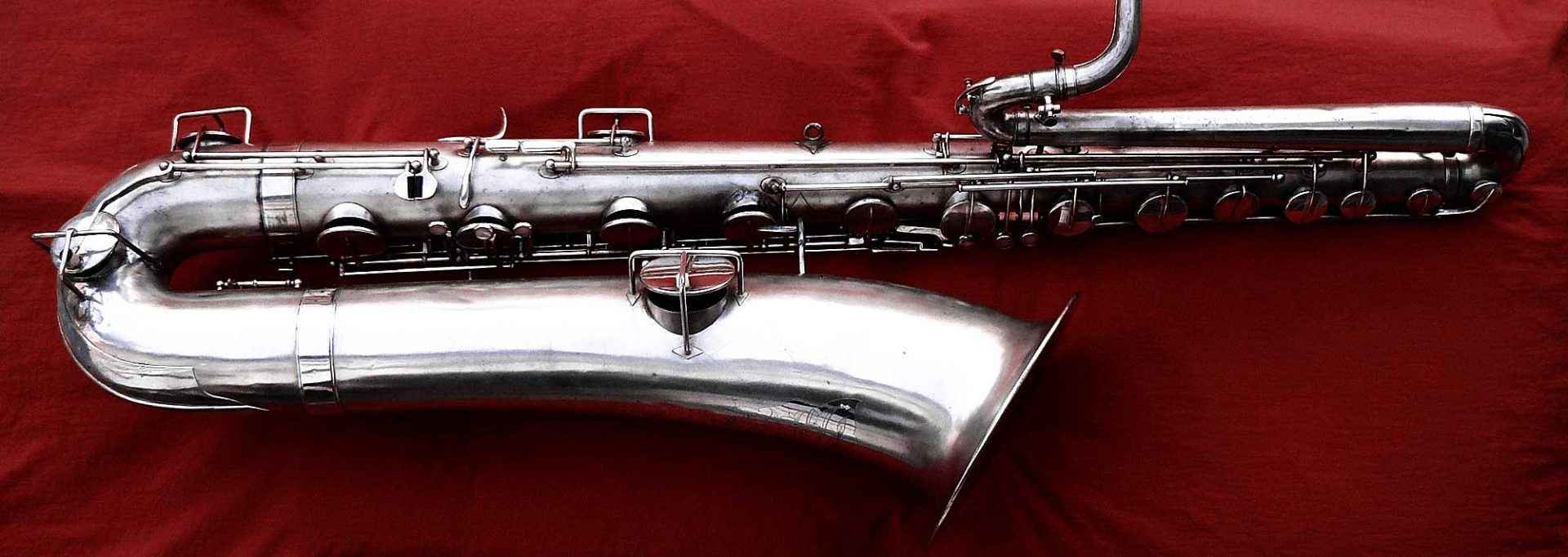
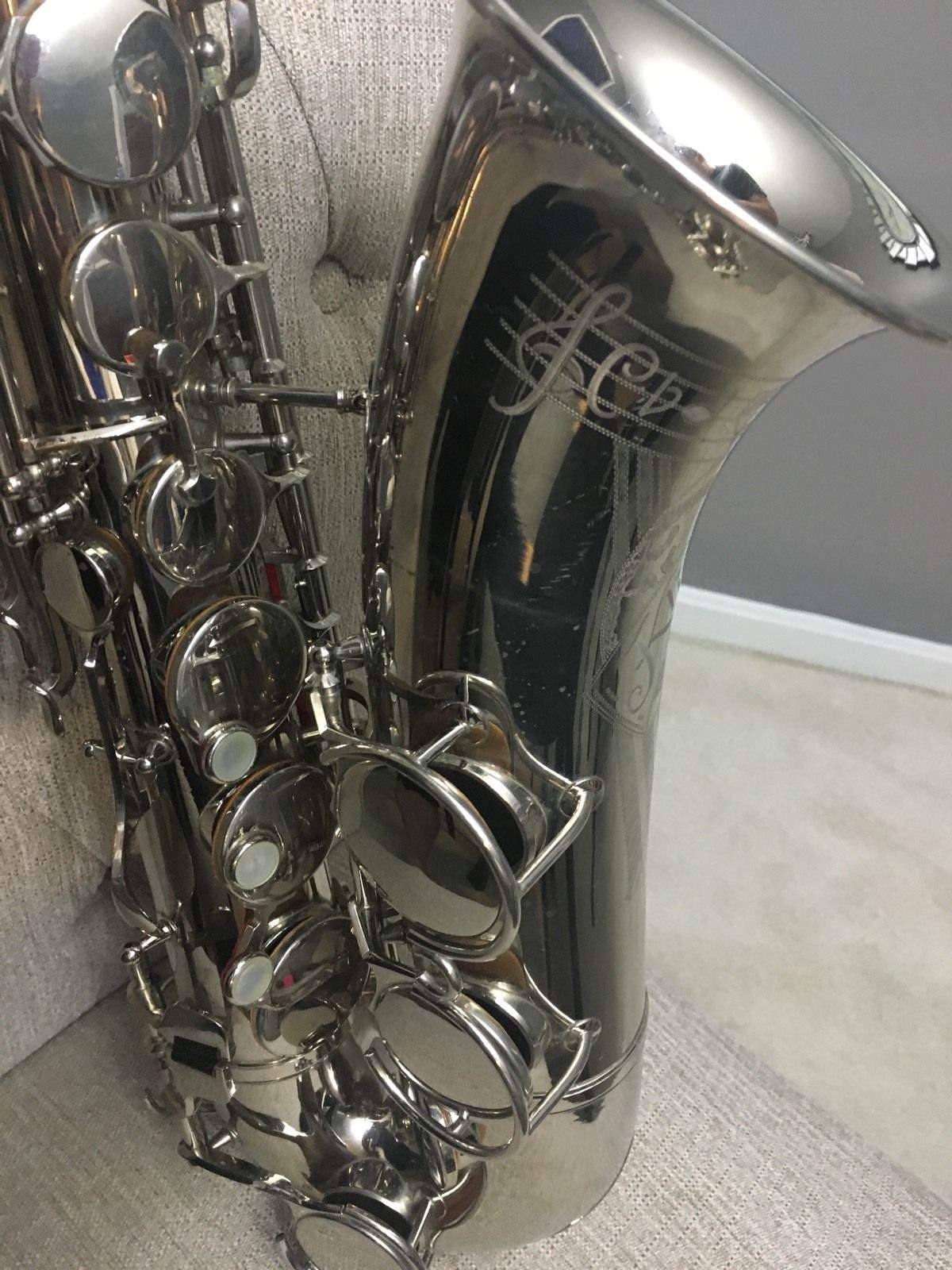

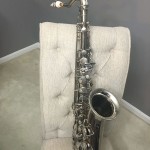
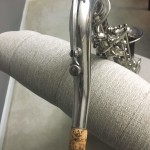
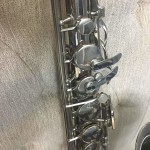
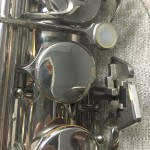

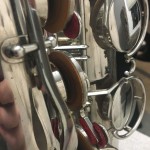
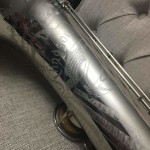
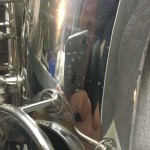
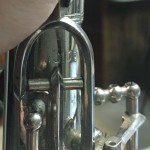
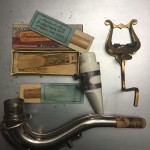



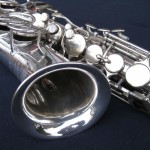
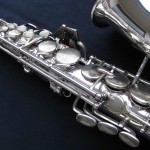

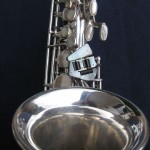
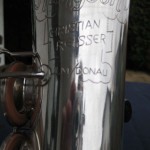
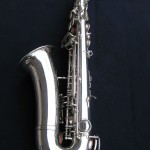


Update: The Klingsor tenor that was located in the US didn’t sell through eBay despite a re-listing. The final listing ended on March 16, 2016 with the usual description: “This listing was ended by the seller because the item is no longer available.”
I wonder if that means that seller had a change of heart, or sold it off of eBay.
The Klingson alto on the other hand, did sell. The German eBay site shows that it sold on March 8, 2016 for €750.00.
I definitely +1 the comment that these are some of the prettiest horns I’ve ever seen.
I do wonder about where these horns come from. IIRC, you determined that “Josef Hammerschmidt” isn’t from the Hammerschmidt company that made saxophones and, of course, “Klingson” is the name for stencils that Hammerschmidt bought. Maybe there were two Hammerschmidt companies ….
I am tempted to email Hammerschmidt. The worst that they can do is ignore me. Hammerschmidt is not that common a last name that the two families wouldn’t have been related—at least distantly. Since Hammerschmidt (the one we know about) owns the Klingson name as well—since they sell their clarients, etc under it—I don’t see how another Hammerschmidt company could use it without major litigation.
This horn makes me wonder about the Josef Hammerschmidt sax. ATT the seller stated the company confirmed it was from 1950 whatever. Perhaps he/she wasn’t just making that up after all. Although there is no Josef Hammerschmidt listed in any of the books, or findable in the online database, perhaps we’re talking about such a small # of instruments that it never made the printed public records.
Since Hammerschmidt is still in the business of making clarinets, maybe they wouldn’t mind answering an email from me. I’ll try. But I’ll do it in German. They’ll likely be more receptive that way. 😉
Might I suggest a totally unfounded hypothesis.
This sax might be from a limited deluxe edition that was named after a favorite nephew (godson?) to differentiate it from the rest of the production saxes. There are many examples of this in a number of industries, some famous like the Apple Lisa, some infamous like the Ford Edsel.
What makes me think that there is some playfulness involved is, among other things, the clever pun hidden in plain sight on the bell: in German, “Cb” is the enharmonic of “H”, for “Hammerschmidt”.
My completely unfounded hypothesis is that they named the saxophone Klingson and engraved it in a circle form.
The n was misstaken by some of their clients for an r. They thought it to be named after the soucerer Klingsor from Wagners Parsival.
The Hammerschmidts adopted the name Klingsor for a period of time not to offend the Wagner fans.
> but I cannot remember seeing another make of saxophone with this type of key arm attachment.
Olds Super: http://thesax.info/piwigo/index.php?/category/1383
Ah Hah! Figures… That was one that got away. I was too slow. I was going to buy Sarge’s personal tenor, but by the time I contacted Chadd, it had already been sold. 🙁
I have always like the Olds Super. I just haven’t looked at enough of them to remember what makes them so peculiar. That would definitely be one of those features that adds to their overall look.